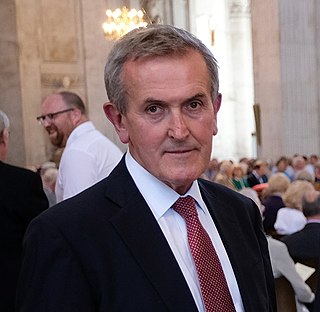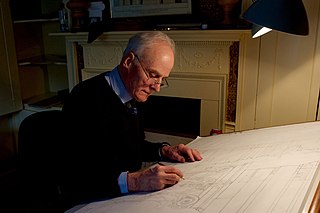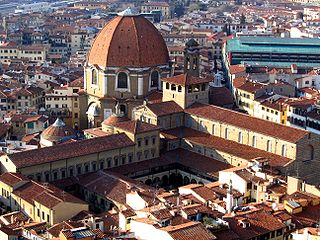
The House of Medici was an Italian banking family and political dynasty that first consolidated power in the Republic of Florence under Cosimo de' Medici, during the first half of the 15th century. The family originated in the Mugello region of Tuscany, and prospered gradually until it was able to fund the Medici Bank. This bank was the largest in Europe during the 15th century and facilitated the Medicis' rise to political power in Florence, although they officially remained citizens rather than monarchs until the 16th century.

The Elgin Marbles are a collection of Ancient Greek sculptures from the Parthenon and other structures from the Acropolis of Athens, removed from Ottoman Greece and shipped to Britain by agents of Thomas Bruce, 7th Earl of Elgin, and now held in the British Museum in London. The majority of the sculptures were created in the 5th century BC under the direction of sculptor and architect Phidias.

Ryman is a stationery retail company with 205 outlets nationwide in the United Kingdom. The website and stores provide a wide range of stationery and office supplies for homes and businesses, with its headquarters in Crewe, Cheshire.

Michelozzo di Bartolomeo Michelozzi was an Italian architect and sculptor. Considered one of the great pioneers of architecture during the Renaissance, Michelozzo was a favored Medici architect who was extensively employed by Cosimo de' Medici. He was a pupil of Lorenzo Ghiberti in his early years, and later collaborated with Donatello.

Robert Neil MacGregor is a British art historian and former museum director. He was editor of the Burlington Magazine from 1981 to 1987, then Director of the National Gallery, London, from 1987 to 2002, Director of the British Museum from 2003 to 2015, and founding director of the Humboldt Forum in Berlin until 2018.

The Design Museum in Kensington, London, England, exhibits product, industrial, graphic, fashion, and architectural design. In 2018, the museum won the European Museum of the Year Award. The museum operates as a registered charity, and all funds generated by ticket sales aid the museum in curating new exhibitions.
Sir Terence Orby Conran was a British designer, restaurateur, retailer and writer. He founded the Design Museum in Shad Thames, London in 1989. The British designer Thomas Heatherwick said that Conran "moved Britain forward to make it an influence around the world." Edward Barber, from the British design team Barber & Osgerby, described Conran as "the most passionate man in Britain when it comes to design, and his central idea has always been 'Design is there to improve your life.'" The satirist Craig Brown once joked that before Conran "there were no chairs and no France."

John Quinlan Terry CBE is a British architect. He was educated at Bryanston School and the Architectural Association School of Architecture. He was a pupil of architect Raymond Erith, with whom he formed the partnership Erith & Terry.

The Medici Chapels are two chapels built between the 16th and 17th centuries as an extension to the Basilica of San Lorenzo, in the Italian city of Florence. They are the Sagrestia Nuova, designed by Michelangelo, and the larger Cappella dei Principi, a collaboration between the Medici family and architects. The purpose of the chapels was to celebrate the Medici family, patrons of the church and Grand Dukes of Tuscany.

The Palazzo Medici, also called the Palazzo Medici Riccardi after the later family that acquired and expanded it, is a Renaissance palace located in Florence, Italy. It is the seat of the Metropolitan City of Florence and a museum.

Neoclassical Hellenism is a term introduced primarily during the European Romantic era by Johann Joachim Winckelmann.

David Rogerson Mellor was an English designer, manufacturer, craftsman and retailer.
Roger Mavity is a business expert, a writer and a photographer.

Wolff Olins is a global brand consultancy agency that specializes in corporate identity. It was founded in 1965 in London, where its main office is still based, as well as having offices in New York City, San Francisco and Los Angeles. It employs some 150 designers, strategists, technologists, environment specialists and programme managers, and has been part of the Omnicom Group since 2001. Since the agency was founded, it has worked for several entities in various sectors including technology, culture, retail, sport, consumer goods, travel, energy and public utilities, media and non-profit.

Greek–British relations are foreign relations between Greece and the United Kingdom. Greece and the United Kingdom maintain excellent and cordial relations and consider each other an ally with the Greek Prime Minister, Kyriakos Mitsotakis, paying an official visit to London in 2021. Greece and the United Kingdom are both members of the United Nations, NATO and the Council of Europe.
Dorothy Louise Victoria Lobel King is an American author who lives and works in England.

The Twentieth Century Society, founded in 1979 as The Thirties Society, is a British charity that campaigns for the preservation of architectural heritage from 1914 onwards. It is formally recognised as one of the National Amenity Societies, and as such is a statutory consultee on alterations to listed buildings within its period of interest.
Henrietta Sophia Conran is a British designer, retailer, cook and author. She is the founder and director of the Sophie Conran Shop.
Ian Dennis Jenkins was a Senior Curator at the British Museum who was an expert on ancient Greece and specialised in ancient Greek sculpture. Jenkins published a number of books and over a hundred articles. He led the British Museum's excavations at Cnidus and was involved in the debate over the ownership of the Elgin Marbles.
Joel Kissin, originally from New Zealand, is a restaurateur who was the co-founder, managing director, and shareholder of Conran Restaurants. Kissin has been involved in opening a dozen restaurants in London and New York.














